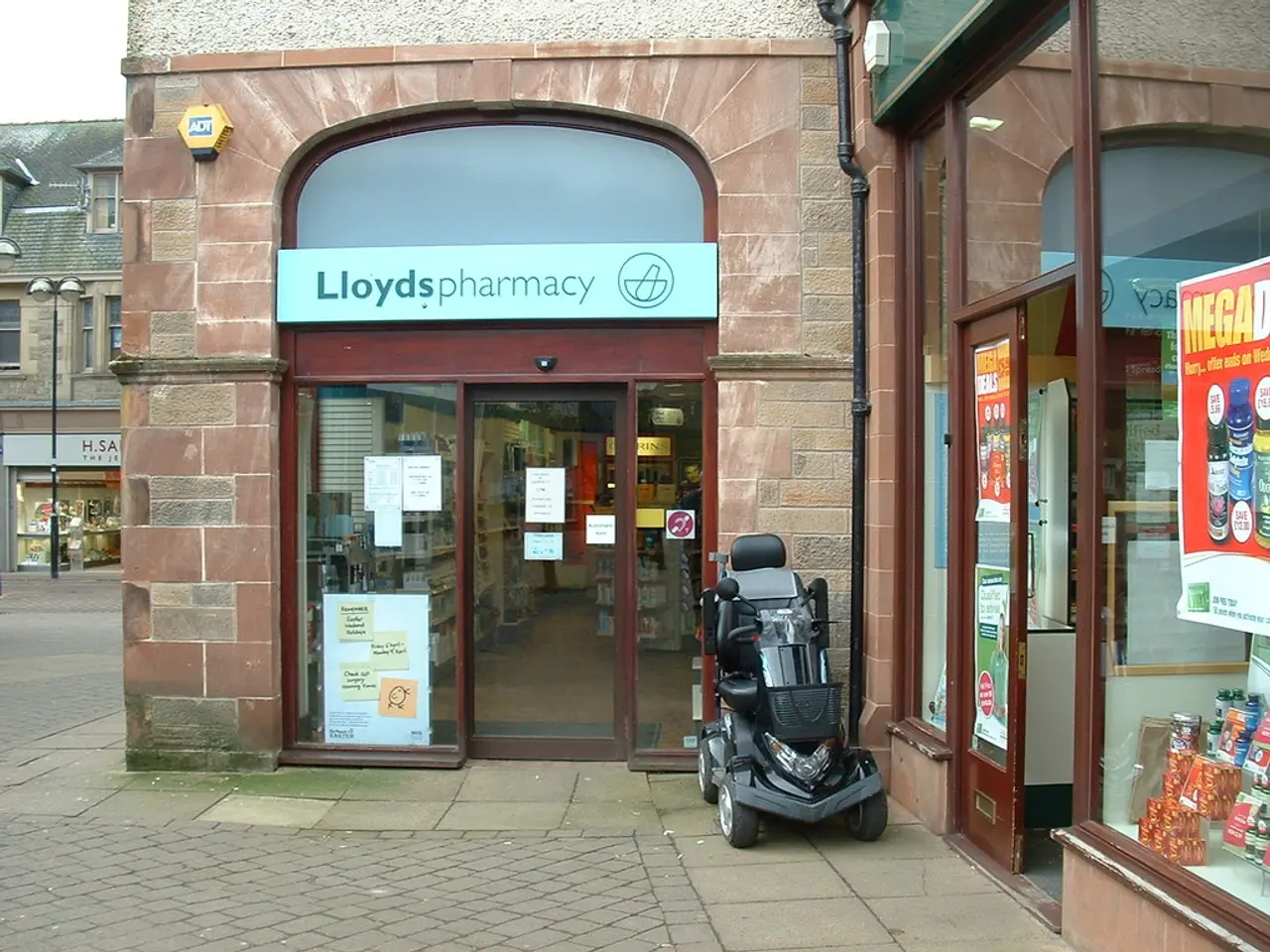Acne treatment with salicylic acid: Effectiveness, usage guidelines, and additional insights
Salicylic acid, a common ingredient in acne treatments, is effective in managing mild to moderate acne. This beta hydroxy acid, found naturally in plants such as willow bark, works by exfoliating dead skin cells, unclogging pores, and reducing inflammation. It is particularly successful in treating blackheads, whiteheads, and comedonal acne.
However, it's essential to use salicylic acid with caution. Potential side effects include mild irritation, redness, dryness, peeling, burning, itching, and swelling. These effects are generally manageable but require careful usage, especially in sensitive skin or if used too frequently. To prevent irritation, it's recommended to start with lower concentrations, apply sparingly, and avoid excessive use. Additionally, users should avoid sun exposure or use sun protection since salicylic acid can increase photosensitivity.
People with pre-existing health conditions that affect their liver or kidneys, are allergic or sensitive to salicylic acid or any of the additional ingredients listed on the product label, are taking medication or are about to undergo laboratory tests, are pregnant or breastfeeding, or do not experience any improvement in their acne after using an salicylic acid product for 6-8 weeks should consult their doctor before using salicylic acid products.
For moderate acne, combination therapies can yield better results. For instance, a 2% salicylic acid topical application used once daily for four weeks has been shown to reduce lesion counts, but combining it with photodynamic therapy significantly improves effectiveness (72.7% effective rate with combination vs. 22.7% with salicylic acid alone).
Precautions for using salicylic acid include patch testing the product on a small area of skin, following product instructions carefully, avoiding using more than the recommended amount, and avoiding applying the product in higher doses or at a greater frequency than stated on the label. It's also advisable to avoid using salicylic acid on broken or sensitive skin to reduce irritation risk, and to avoid concurrent use with other strong exfoliants or irritants.
The American Academy of Dermatology (AAD) recommends using a skin care product containing salicylic acid to treat certain types of acne, including pustules, papules, blackheads, and whiteheads. When using topical acne treatments, people may have to wait 6-8 weeks to start seeing results.
In addition to salicylic acid, an over-the-counter retinoid may help to unclog pores. Adapalene is an example of a non-prescription retinoid. It's also important to note that salicylic acid decreases the skin's sebum production, leading to fewer breakouts.
However, salicylic acid may not be safe for everyone, particularly those with pre-existing conditions such as liver disease, peptic ulcers, or asthma. Pregnant and breastfeeding women should also exercise caution and consult their doctor before using salicylic acid products.
Lastly, it's crucial to remember that everyone's skin is unique, and reactions to salicylic acid can vary. Anyone who experiences side effects while using salicylic acid should stop using the product and contact their doctor. If a person develops symptoms of an allergic reaction or salicylic toxicity, they should seek immediate medical attention.
References:
[1] Elbuluk, N., & Thiboutt, W. (2016). Acne vulgaris: Epidemiology, pathogenesis, and the role of inflammation. Journal of Investigative Dermatology, 136(12), 2457-2466.
[2] Hsu, S. C., & Kang, S. H. (2015). Acne: A comprehensive review. Journal of Clinical and Aesthetic Dermatology, 8(3), 23-31.
[3] Kang, S. H., & Chen, Y. R. (2014). Topical treatments for acne vulgaris. American Journal of Clinical Dermatology, 15(3), 185-194.
[4] Lee, J. Y., & Han, S. W. (2017). Acne: Current management and future directions. Annals of Dermatology, 29(1), 3-11.
- Beyond salicylic acid, over-the-counter retinoids like adapalene can aid in unclogging pores to combat acne.
- To minimize side effects when using salicylic acid, it's advisable to patch test the product on a small area of skin first.
- People with pre-existing health conditions, such as liver disease or asthma, or those who are pregnant or breastfeeding should exercise caution when considering salicylic acid products.
- When starting a new skincare routine with salicylic acid, users may have to wait 6-8 weeks to see results.
- Combination therapies that incorporate salicylic acid and other treatments, such as photodynamic therapy, can significantly boost their effectiveness in managing moderate acne.
- Nutrition and healthy diets play a role in skin care, as proper nourishment can support overall skin health and help maintain clear skin.
- CBD, a compound found in cannabis, has shown promise in treating certain skin conditions, though further research is needed to establish its efficacy and safety.




